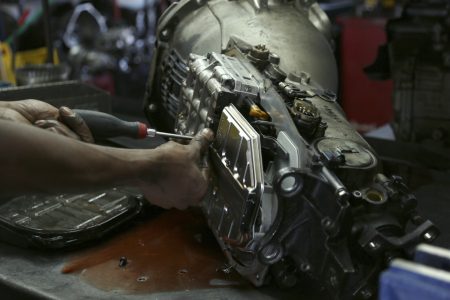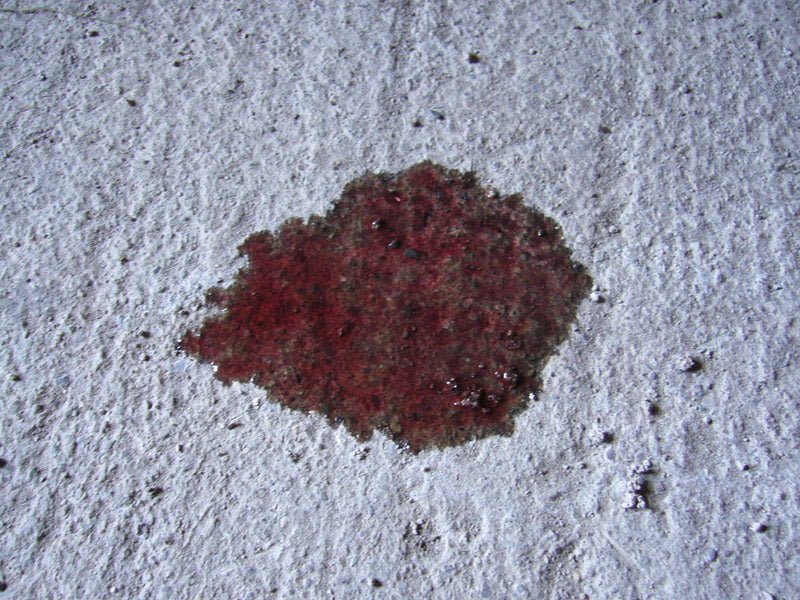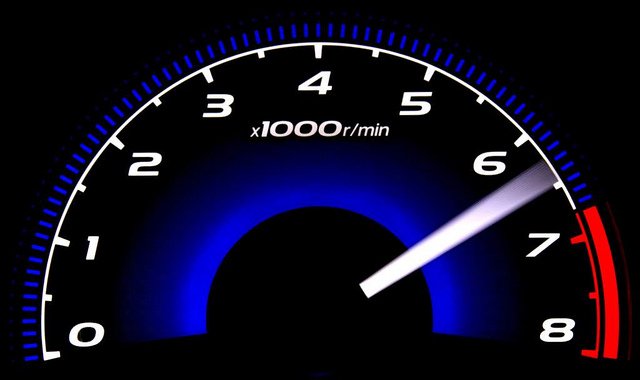 Transmission fluid is one of the fluids in your car that most of us don’t think to check. Unlike your engine oil, your transmission fluid level doesn’t often change. Your engine oil level can change significantly in a short amount of time even if your engine doesn’t leak oil. Your engine oil level can change because under certain conditions your engine oil can enter the combustion chamber and be burned along with the air fuel mixture. This would then be expelled out your exhaust and your engine would lose oil without you ever seeing a leak. Your transmission, on the other hand, has far few places for the fluid to escape. Your transmission only has 2 seals, the input shaft and output shaft seal, and maybe 2 to 3 other gaskets where pieces of the transmission bolt together.
Transmission fluid is one of the fluids in your car that most of us don’t think to check. Unlike your engine oil, your transmission fluid level doesn’t often change. Your engine oil level can change significantly in a short amount of time even if your engine doesn’t leak oil. Your engine oil level can change because under certain conditions your engine oil can enter the combustion chamber and be burned along with the air fuel mixture. This would then be expelled out your exhaust and your engine would lose oil without you ever seeing a leak. Your transmission, on the other hand, has far few places for the fluid to escape. Your transmission only has 2 seals, the input shaft and output shaft seal, and maybe 2 to 3 other gaskets where pieces of the transmission bolt together.
Under normal operating conditions, the input and output shaft seals in your transmission are the most likely seals to leak. The gaskets that separate different parts of your transmission, like the pan gasket, or the valve body gasket, usually don’t leak. Since these parts don’t often move in relationship to each other and aren’t subject to high forces, they tend to last a very long time. In some extreme cases like extreme shock or abnormally high temperatures, the gaskets can shift and start to leak, but usually they don’t cause problems.
The input and output shaft seals, on the other hand, are subject to large temperature gradients, the rotation of the shaft that passes through it, and in the case of the output shaft, dirt and road grime. The rotation of the shaft will wear on the seal no matter how often you change your transmission fluid as constant rotation will slowly wear down the seal material. Temperature gradients can cause parts of the seal to start to lose its flexibility causing it to become brittle or even misshapen. Lastly, the road grime the output shaft seal is exposed to can work its way in between the shaft and the seal causing scoring and tears in the seal.
Replacing the input shaft seal is an extremely difficult job in any transmission because it will require removal of the transmission to remove and replace the seal. This job can get expensive quickly due to the amount of labor required to remove a transmission. The output shaft seal is not always an easy repair either. On a 4×4 or many all-wheel drive vehicles it will require removal of the transfer case or other components to access that seal.
Rather than incurring the cost of the labor and seal replacement along with fresh transmission fluid, consider repair your leaking transmission seal from the inside out. BlueDevil Transmission Sealer is a chemical sealing agent that you can add to your transmission fluid safely. BlueDevil Transmission Sealer will circulate through your transmission and come into contact with all the seals and gaskets. BlueDevil Transmission Sealer will restore those seals and gaskets to their original size, shape and flexibility sealing your leak and keeping your transmission working properly.
For more information about BlueDevil Transmission Sealer, click the banner below.

You can find BlueDevil Transmission Sealer, and other BlueDevil stop leak products at any of our partnering local auto parts stores like:
- AutoZone
- Advance Auto Parts
- Bennett Auto Supply
- CarQuest Auto parts
- NAPA Auto Parts
- O’Reilly Auto Parts
- Pep Boys
- Fast Track
- Bumper to Bumper Auto Parts Specialists
- S&E Quick Lube Distributer
- DYK Automotive
Pictures Provided By:
transmission_leak.jpg – By Curtis Creative – Licensed by Thinkstock Photos – Original Link
BlueDevil Products can be found on Amazon.com or at AutoZone, Advance Auto Parts, O’Reilly Auto Parts, NAPA, and other major auto parts retailers.
9 responses to "Why is my Car Leaking Transmission Fluid?"
9 Comments
Leave a Reply
Related Articles




I am constantly amazed by how many things can go wrong in my car. A transmission is understandably complex, but the ways in which it can break never cease to amaze me. I really like the way you talked about options for repairing it though. Thanks for the advice!
I have a 1987 El Camino that I believe has the original transmission. I have a leak in the seal(s). I was informed that using BlueDevil Transmission Sealer in my transmission may cause problems with other seals in the transmission, and if I get another leak in the transmission, I may have to have a complete transmission overhaul. Can you let me know if this is true? Thanks
Allen-
The BlueDevil Transmission Sealer is 100% safe to use in your El Camino. The product does not harden or thicken in any way, so it would not have any adverse affects on the system. Feel free to contact our technical support line at 888-863-0426 with any other questions.
Thank you!
-BDP
Is your product recommended for use with a 51 Ford that uses a heavy duty tranny fluid?
Jeff-
Thank you for asking about your Ford. The BlueDevil Transmission Sealer is intended for the rubbers in the system. Most older vehicles were using cork or rope seals, which the product would not have any effect on. Feel free to contact our technical support line at 888-863-0426 with any other questions.
Hope this helps!
-BDP
2006 Lincoln Town Car 4.6L transmission leak from the seal inside the transmission would you blue devil sealer work?
Eddie-
Yes, BlueDevil Transmission Sealer will work for the leak you have described. Based on your transmission fluid capacity we recommend adding 10 ounces of BlueDevil Transmission Sealer for proper treatment. You can expect to start seeing results after about 100 miles of driving.
Thank you!
-BDP
Just purchased used 2004 Nissan Murano notice transmission fluid leaking from underneath front of car. Was told there was piece loose had it tightened. Now notice leak underneath in the middle of car. Can it be the pan or need new transmission.
KTis-
Thank you for asking about your Nissan Murano. Based on your description, we recommend using the BlueDevil Transmission Sealer (https://store.gobdp.com/transmission-sealer-00236/). As long as you are not losing transmission fluid too quickly, you would be a great candidate for the product. You will be adding one oz. of the product per quart of fluid in the system, and should expect to see results after approximately 100-200 miles of driving.
Thank you!
-BDP